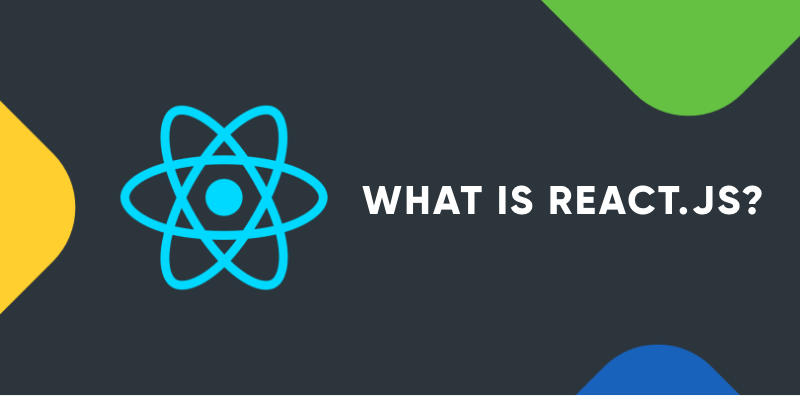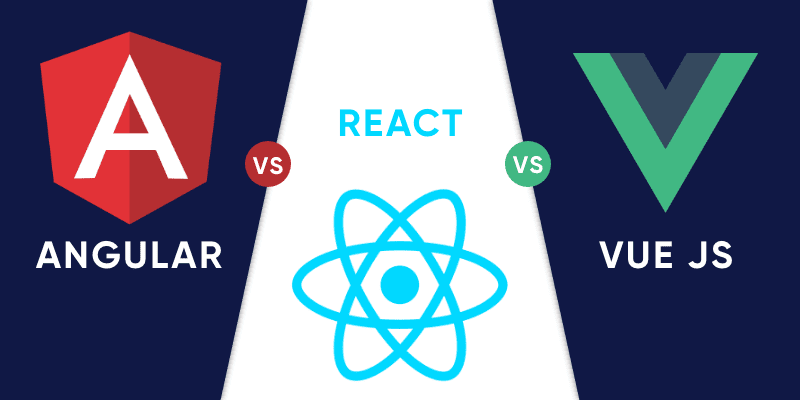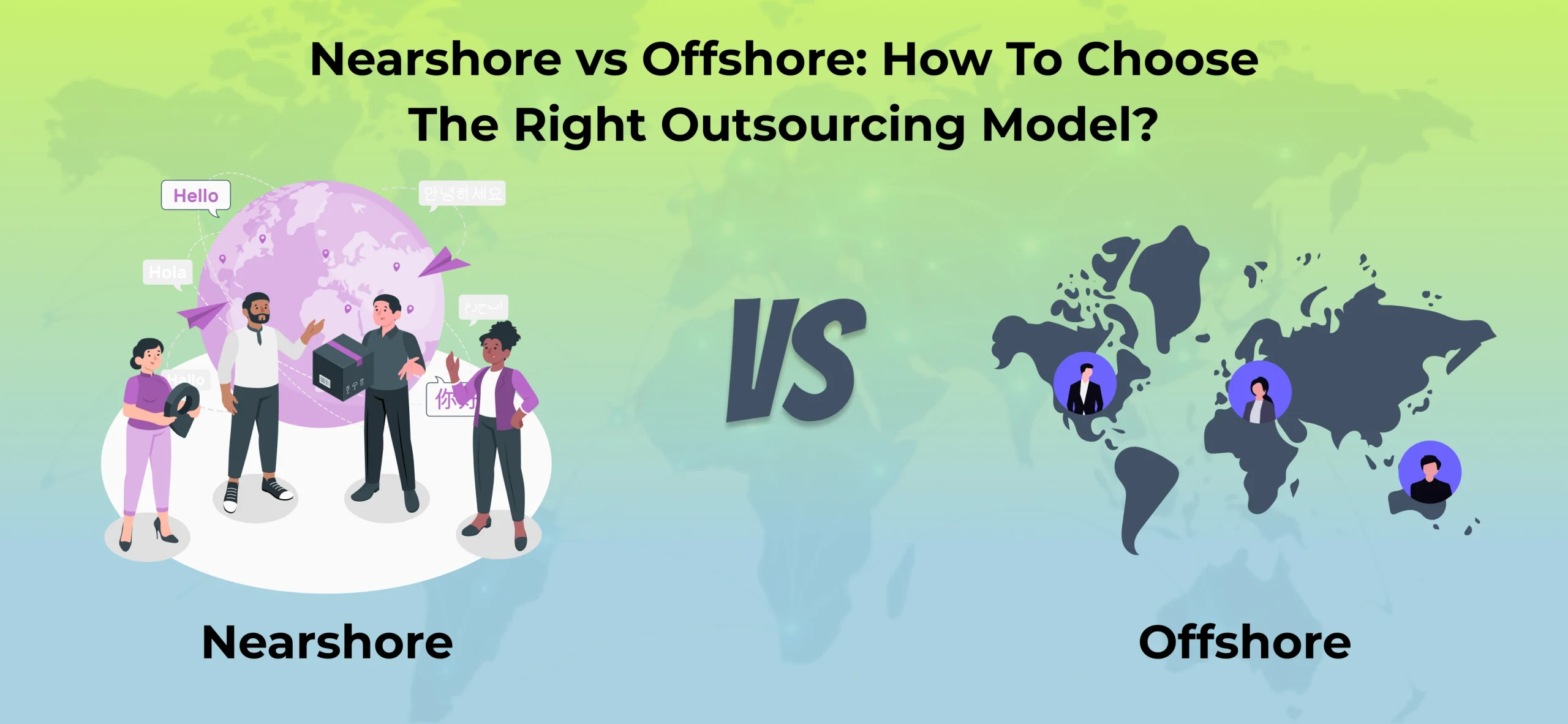Choosing a Modern Front‑End for Web, Android & iOS
In 2025, selecting the right JavaScript framework—Angular, React, or Vue—goes far beyond basic front-end functionality. It influences mobile-first performance, SEO visibility, and cross-platform strength for Android apps, iOS apps, and progressive web apps (PWAs). To thrive in today’s landscape, your tech stack must align with Google’s latest E‑E‑A‑T principles—demonstrating genuine Experience, Expertise, Authoritativeness, and Trustworthiness. This guide breaks down each option to help U.S.-based developers and decision-makers choose wisely.
Core Strengths & Architecture
Angular
Developed by Google, Angular is a full-fledged, TypeScript-based framework with built-in routing, DI (dependency injection), form validation, and CLI tooling—ideal for large-scale enterprise web apps that require structure, strong type-safety, and maintainability.
React
React, backed by Meta, is a lightweight JavaScript library with JSX, focused on UI components. Its virtual DOM ensures fast updates, and its ecosystem (Redux, React Router) empowers flexibility. When paired with React Native, it delivers near-native Android and iOS app performance from a unified codebase.
Vue
Created by Evan You, Vue is a progressive framework that combines simplicity and power with Single-File Components and a reactive system. It’s embraced by a growing community and ideal for incremental adoption within existing apps. With tools like Vue Router and Pinia, Vue offers a powerful yet accessible front-end environment.
Popularity & Adoption
| Framework | GitHub Stars | NPM Weekly Installs | Market Share |
|---|---|---|---|
| React | ~210K+ | ~15M+ | ~40% |
| Vue | ~210K+ | ~5M+ | ~18% |
| Angular | ~85K+ | ~2.5M+ | ~22% |
Performance & SEO
To meet mobile-first indexing requirements, frameworks must support Server-Side Rendering (SSR) and Static Site Generation (SSG). Angular uses Angular Universal, while React leverages Next.js, and Vue utilizes Nuxt.js to deliver fast First Contentful Paint (FCP) and Time to Interactive (TTI).
Mobile App Trends
Modern trends emphasize progressive web apps, native-like Android and iOS experiences, and responsive design. React Native supports single-codebase mobile development, while Angular and Vue integrate smoothly into mobile workflows via Ionic and Capacitor.
A recent 2025 study highlights how UX design principles—navigation, visuals, performance tuning—drive better retention and conversion for mobile apps. These align with trends developers must embrace when choosing frameworks.
Learning Curve & Developer Experience
Vue offers the gentlest learning curve, ideal for fast app prototyping.
React offers flexibility with JS modules but requires understanding of ecosystem tools.
Angular has the steepest learning curve, due to its opinionated architecture and TypeScript, but delivers consistency and scalability.
Use Cases & Ecosystem Ready for 2025
Enterprise Web & Large-Scale PWAs
Angular is perfect for structured, maintainable systems with strong typing and enterprise-grade CLI features—ideal for SEO-optimized dashboards and B2B platforms.
High Scalability & Hybrid Apps
React + Next.js + React Native serve a versatile stack that allows rapid web development, robust SSR for SEO, and unified mobile deployment to Android and iOS.
MVPs & UI-Centric Apps
Vue + Nuxt.js is ideal for startups and design-first teams needing fast build cycles, easy scaling, strong SSR, and mobile-level responsiveness.
The rate of technological development is speeding up alarmingly. Many new tools and approaches exist in the business world throughout the years, but not all of them have lasted. JavaScript, a programming language, has successfully established itself across all industry verticals and has grown to become one of the most popular programming languages. This blog is the comparison of Angular Vs React Vs Vue.
According to a recent Statista survey, 64.96 percent of developers see JavaScript as a major factor in their enthusiasm for the language. JavaScript is helpful in creating desktop and mobile applications for both the client-side and server-side programming languages in recent years. Because there are so many possibilities, JavaScript developers are frequently confused when it comes to selecting the proper framework among the vast array of frameworks that exist. Every front-end developer has heard of React.js, Vue.js, and Angular.js, three frameworks for web development of applications.
Vue.Js Is A Progressive Framework
While React is a UI library, Angular is a full-featured front-end framework. Although they can be used practically interchangeably to create apps with front-end frameworks, they are not identical, thus it’s important to compare and understand the differences. Each framework is component-based, allowing for quick UI feature building.
This blog compares and contrasts Angular vs React vs Vue to help you decide which is the best solution for you. Only a few years ago, developers were primarily debating whether to use Angular.js or React.js for their applications. However, we’ve witnessed an increase in interest in a third player named Vue.js during the last couple of years. If you’re a developer who’s just starting a project and can’t select which JavaScript framework to choose, this guide will assist you.
We’ll look at different aspects of Angular vs React vs Vue to determine if they’re right for you. This blog aims to provide a framework for analyzing JavaScript-based front-end frameworks in general, not simply Angular vs React vs Vue. You’ll know exactly what parameters to look at if a new framework releases next year! Make sure you read the license before using an open-source framework. All three frameworks, interestingly, adopt the MIT license, which allows for restricted reuse even in proprietary applications. Before you use any framework or program, be sure you understand the license’s significance.
What is Angular.js?

In 2010, Google introduced Angular.js as a framework for developing online applications. The Angular 2 framework, which is a complete rebuild of the original Angular.js framework, is 2016 product. Various versions exist since then. Angular 13 is the most recent version.
This open-source and free framework is very helpful in developing a large number of single-page applications. It has become a popular alternative for designing cross-platform apps because it is entirely on the MVW architecture. It supports both client-side MVC and MVVM architectures, making it easier for developers to create JavaScript apps. Many firms are taking benefit of outsourcing their development to an Angular.js development company.
What Is React.Js?

React was launched by Facebook in 2013 as a tool to overcome the issues caused by enormous levels of traffic generated by its Facebook adverts. It did, however, overcome concerns with code and maintenance. In a nutshell, it’s a popular framework for JS developers looking to create single-page websites and mobile apps. The framework is open-source, free to use, and includes features that will assist you in developing iPhone and Android apps. Giant firms are now utilizing React for the web development of apps. It is also well-known for its ability to provide excellent assistance in the creation of interactive user interfaces. The application’s latest stable version is 17. X, is a product of October 2020.
It’s a JavaScript library for creating user interfaces for online and mobile apps. Both Facebook and Instagram (Currently Meta) now support the technology, which has evolved into an important feature of both apps’ endless feed functionality. React is a JS library with a restricted variety of applications when used alone; but, when integrated with other libraries, it provides a strong solution, making it a competitor to Angular.js.
What is Vue.js?

The Vue.js framework was built by Evan You, a former Google engineer who worked on Angular while at Google. Vue.js is an open-source framework that is lightweight, powerful, and capable of handling a wide range of web applications. It was first released in 2014. The usage of component composition techniques in the building of single-page apps is in high demand, especially for the user interface. Vue.js allows developers to create beautiful, engaging, and high-quality web development of applications by combining React.js with Angular.js.
Vue.js is an open-source framework for creating progressive user interfaces. Unlike Angular.js, Vue’s design was to help the users so that users could gradually adopt the framework. Vue 3 adds plenty of new features and improvements to Vue.js. The proper construction of standalone reactive objects, async error handling, the introduction of Slots, and more are among the new features. Vue.js has recently gotten more attention as one of the hottest topics to talk about when it comes to the framework.
Major Difference Between Angular vs React vs Vue
If your decision is only based on the advantages and downsides of Angular vs. React, you’ll just need to consider the pros and cons stated in this post for those libraries. However, keep in mind that both libraries are useful in creating mobile and web apps, with Angular being preferable for more complex enterprise-ready projects.
React requires extra modules and components frequently, which keeps the core library short but adds extra work when integrating external tools. Angular, on the other hand, is a more complete solution that doesn’t require the addons that React frequently does, however, it does have a steeper learning curve for its core than React. React is better suited to intermediate to advanced JavaScript developers who are familiar with ES6 and higher ideas, but Angular is better suited to the same developers who are also comfortable with TypeScript.
The debate over React vs Vue is raging, and the decision isn’t easy. Vue has a thriving and ever-expanding community, and it has surpassed React in popularity in many ways. React developers are still creating plenty of new components and add-ons, so the framework isn’t on the decline.
In comparison to React, Vue is better suitable for smaller, less complex apps and is easier to learn from scratch. Many people believe that Vue’s usage of HTML templates combined with JSX makes it easy to integrate into new or current projects. Overall, Vue is a better choice if you’re a newer developer who isn’t familiar with complex JavaScript principles, but React is better suited for experienced programmers and developers who have dealt with object-oriented JavaScript, functional JavaScript, and other comparable concepts.
In most circumstances, you wouldn’t have to choose between Angular and Vue. They’re two completely different libraries with completely different feature sets and learning curves. For developers who have just begin, Vue is the obvious choice, while Angular is for larger apps.
The fact that the two most recent major versions of Vue are in different repositories helps. A huge library like Angular would require more care in keeping up with what’s new, whereas Vue would be less demanding in this respect. It’s also worth noting that Vue was designed by a developer who previously worked for Google on Angular, so it’s something to consider, but it shouldn’t have a major impact on your choice.
Which Framework Should You Choose If You Are A UI Developer?
Each of the technologies listed serves a distinct purpose in terms of how you approach and manage a certain project. Angular, for example, is one of the top front-end frameworks that allow you to create dynamic single-page web development of apps for large-scale commercial projects. When it comes to designing UI through the usage of components, Vue and React are capable and versatile enough for both business and start-up projects.
In terms of pure job market needs, React and Angular are definitely more popular and in-demand than Vue. Vue.js is the newest of the three, but it is quickly gaining traction, with significant businesses migrating to Vue.
Let’s have a look at the data on their GitHub repositories for Angular, React, and Vue (mention that the Vue numbers also include the distinct Vue 3.0 repository):
| Angular | React | Vue | |
| # Watchers | 3.1k | 6.7k | 6.3k |
| # Stars | 78.4k | 180k | 218k |
| # Forks | 20.6k | 36.5k | 35.5k |
| # Contributors | 1,500+ | 1,500+ | 400+ |
Vue has a large number of viewers, stars, and forks when compared to React.js. This demonstrates Vue’s user appeal as well as its worth when compared to React.js. Vue.js, on the other hand, has fewer contributors than Angular.js and React.js. One explanation could be that Vue.js is totally driven by the open-source community, whereas Angular.js and React.js both have a large number of Google and Facebook workers contributing to the repositories. According to the statistics, all three projects are showing considerable development activity, which will undoubtedly continue in the future — nonetheless, these numbers cannot be used to justify not using either of them. An active community and development are part of a growing and stable environment when choosing a framework to examine. For new and aspiring UI developers who want to begin creating mobile apps and web development of apps, angular provides a variety of ready-made components. From Google’s Material Design visual design language to CSS themes, it has a lot of pre-built components.Vue.js made a lot of things easier for developers when it came to data binding. Using the most popular open-source applications within the ecosystem to make use of input components speeds up mobile and online app development with Vue. In terms of overall ecosystem maturity and component availability, as well as community, React.js may be the winner when compared to Angular and Vue. It also integrates with other platforms and tools like Git and UXPin.
In most circumstances, you wouldn’t have to choose between Angular and Vue. They’re two completely different libraries with completely different feature sets and learning curves. For developers who have just begin, Vue is the obvious choice, while Angular is for larger apps.
The fact that the two most recent major versions of Vue are in different repositories helps. A huge library like Angular would require more care in keeping up with what’s new, whereas Vue would be less demanding in this respect. It’s also worth noting that Vue was designed by a developer who previously worked for Google on Angular, so it’s something to consider, but it shouldn’t have a major impact on your choice.
You don’t want to have to worry about a framework update screwing up your code when you’re working with your preferred framework. Though you won’t have any problems switching from one version to the next in most circumstances, it’s crucial to keep your finger on the pulse because some changes are more significant and require tweaks to be compatible. Every six months, Angular prepares major updates. There will also be a six-month grace period before any significant APIs are deprecated, giving you two release cycles (one year) to make any necessary modifications.
When it comes to Angular.js vs. React.js, Facebook has claimed that stability is essential, emphasizing the use of React.js by major companies such as Twitter and Airbnb. Upgrades with React are typically the simplest, with scripts like react-codemod assisting with migration.
Much is the same between Vue 2 and Vue 3, and 90 percent of the API is the same if you’re moving from 1.x to 2.x, according to the Migration portion of the Vue 3 documentation. On the console, there’s a Vue 2 to Vue 1 migration helper tool that evaluates your app’s status.
What is the difficulty level of learning each of these frameworks?
Because Angular.js is a comprehensive solution, it has a steep learning curve, and understanding it necessitates knowledge of related topics like TypeScript and MVC. Although learning Angular.js takes time, the investment pays off in terms of understanding how the front end operates.
React.js provides a guide that should take approximately an hour to set up. The documentation is extensive and comprehensive, with answers to typical problems currently available on Stack Overflow. React.js isn’t a complete framework, therefore you’ll need to employ third-party libraries for advanced features. As a result, the fundamental framework’s learning curve isn’t as steep, but it is dependent on the path you follow with additional functionality. However, just because you know how to use React.js doesn’t mean you’re following best practices.
Vue.js is easier to learn than Angular.js or React.js because it is more customizable. Furthermore, Vue’s functionality, such as component use, overlaps with Angular.js and React.js. As a result, switching from one of the two to Vue is simple. However, Vue’s simplicity and flexibility have a downside: it allows for bad code, which is difficult to debug and test.
Although Angular, React, and Vue have a steep learning curve, after achieving mastery, the possibilities are endless. For example, you may construct progressive apps with web development by combining Angular.js and React.js with WordPress and WooCommerce.
React.js is not precisely a framework because it may be useful as a UI toolkit to render items without requiring a specific project structure. The simplest building pieces of React programs are React Elements. Because the React DOM ensures that they are updated efficiently whenever something changes, they are more powerful than DOM elements. Components are larger building blocks that define self-contained, reusable elements that can be utilized anywhere in the program. They take props as input and generate elements that the users can see.
React.js is built on JavaScript, although it’s mainly used in conjunction with JSX (JavaScript XML), a syntax extension that lets you create elements that include both HTML and JavaScript. The React JavaScript API can build anything you make with JSX, but most developers prefer JSX since it’s more intuitive. The View layer is the only focus of the Vue.js core library. It’s termed a progressive framework because you can transform it into a genuine framework. By extending its features using official and third-party packages like Vue Router or Vuex.
Vue was partly influenced by the MVVM (Model-View-ViewModel) pattern, although not being formally related to it. You’ll spend most of your time with Vue working on the ViewModel layer, making sure that app data is processed in a way that allows the framework to deliver an up-to-date view. You may create View components with Vue’s templating syntax, which combines common HTML with unique directives and functionalities. Although raw JavaScript and JSX are also available, this templating syntax is preferable. Vue components are compact, self-contained, and reusable across the application. SFCs with the Vue.js extension contain HTML, CSS, and JavaScript, allowing all relevant code to exist in one file.
In Vue.js applications, especially bigger ones, SFCs is the recommended approach to arrange code. SFCs need transpiling into functioning JavaScript code using tools like Webpack or Browserify. The original framework, Angular.js, is a Model-View-Controller (MVC) framework. However, because Angular 2 is component, there is no tight link with MV*-patterns. Modules, Components, and Services are used to organize Angular projects. There are at least one root component and one root module in every Angular application.
A Template, a Class that provides the application logic, and MetaData are all included in each Angular component (Decorators). A component’s metadata instructs Angular where to go for the building elements it needs to create and deliver its view. Angular templates are created in HTML, but they can also use Angular template syntax with additional directives to render multiple items and output reactive data, among other things. Components in Angular employ Services to delegate business-logic responsibilities like obtaining data and validating input to Services. They’re a separate component of Angular applications. While Angular does not need them, it is strongly advisable that apps designing in such a way that as a set of discrete services that can be reusable. Because Angular is written in TypeScript, it is suggested that you utilize it for the best experience, but you can also use ordinary JavaScript.
Angular uses TypeScript . Because TypeScript is a statically typed programming language. You must declare the type of each variable (string, character, number, array, etc.). The goal is to make TypeScript more user-friendly for developers who have experience with object-oriented programming. It’s a framework that unites UI templates and JavaScript logic, which is a concept that no other framework has attempted to execute. The JSX is the name of the resulting style. Reacts works by using a component, which is a single file that contains both the code and the HTML. You must be familiar with JavaScript in order to use react. HTML, Js, and CSS are the three components of the Framework. New developers can easily adapt to Vue.js’ template-based approach, and these developers can also easily adapt to the programming style recommended by Vue.js.
Who Wins?: Angular Vs React Vs Vue
Let us review the characteristics of each framework at the end of this essay to try to answer the question: Angular vs. React vs. Vue: which one should you choose? With a large community of contributors and a comprehensive set of features, Angular is the most mature of the frameworks. However, the learning curve is steep, and new developers may be put off by Angular’s development ideas. For firms with large teams and developers who already use TypeScript, Angular is a good choice.
React.js is just old enough to be mature, and it has a large community of contributors. It has a lot of traction. The React job market is thriving, and the framework’s future appears to be promising. React.js appears to be a decent alternative for newcomers to JavaScript-based front-end frameworks, startups, and those who want a little more flexibility. Its ability to seamlessly interact with various frameworks is a huge benefit. Especially for those who want a little more freedom in their coding. Vue.js is a newcomer to the market, and it does not have the backing of a big company.
Angular Vs React Vs Vue
However, it has done exceptionally well in recent years to establish itself as a serious contender to Angular.js and React.js, particularly since the introduction of Vue 3.0. This could explain why Chinese giants such as Alibaba and Baidu have chosen Vue as their preferred JavaScript-based top front-end frameworks. If you want simplicity yet want flexibility, Vue is the way to go. The conclusion to the Angular vs. React vs. Vue debate is that there is no absolute best choice, which you probably expected.
All of these libraries have their own set of benefits and drawbacks. Depending on the project you’re working on and your specific needs, one of them will be better than the others. It’s crucial to conduct your own research before making a decision. Especially if you’re working on a company project rather than a personal project.
Conclusion
You won’t make a mistake whichever framework you choose. Because all three are continually changing, by adding and removing new features as new versions arrive. After all, if you want to enhance your career as a UI developer. These are the greatest JavaScript frameworks to master.
Regardless of which JavaScript framework you choose to devote your attention to, the most important thing is to always stay up to speed on the latest features and development. You can choose any of these three among angular vs react vs vue as per your requirements. Still confused? Contact us now!



